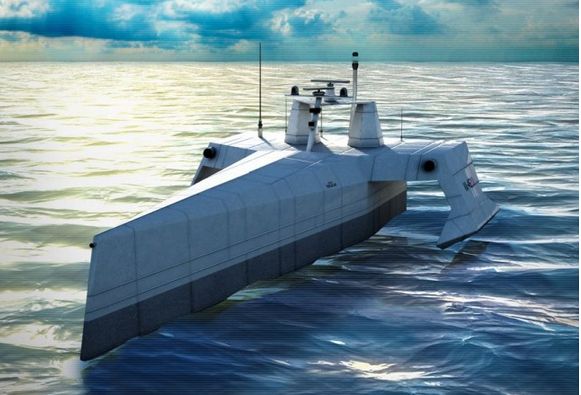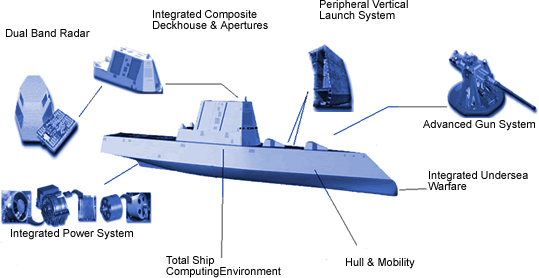Vigor Works of Clackamas is building a special warfare boat called the Sealion 2 and testing it in the Columbia River (Flickr photos).
The newest stealth warfare boat is made for delivering Navy SEALs, called the Sealion IV, is being tested in the Columbia River this week. It was built by Vigor Works of Clackamas.
Stored in an enclosed moorage under the Schooner Creek Boat Works, the newest Sealion is designed to get SEALs in and out of danger, quickly and quietly, along with their jet skis.
vigor.net/projects/combatant-craft-heavy-cch
https://www.schoonercreek.com/
vigor.net/facilities/clackamas
https://vigor.net/projects/combatant-craft-heavy-cch
https://vigor.net/services/maritime-security
The initial three CCHs, each designated as Sealion-I, Sealion-II, and Sealion-III, represent a lineage of evolving designs within the program. Although they share similar capabilities, subtle differences in their construction can be observed.
The fourth, also called Sealion, is designed for the US Navy’s Special Warfare Special Boat Teams and considered classified. Therefore, the Navy has never made public the exact nature of its operations, specific details regarding its missions, or capabilities.
The Sealion (SEAL Insertion, Observation and Neutralization) class has been in protracted trials with the US Navy special forces (SEALs) for some years. SEALION is a high-speed, low observable/low radar signature craft that can operate in the littorals.
The SEALION I was delivered in January 2003, and is based in the Norfolk, Va., where it has been tested by Naval Special Warfare.
The second SEALION, as was the first, is being fabricated by Oregon Iron Works under a $10 million contract from the Carderock Division in Bethesda, Md. The hull material could be a sandwich construction comprising a PVC core with a carbon fibre and vinyl laminate.
The Sealion (SEAL Insertion, Observation and Neutralization) class has been in protracted trials with the US Navy special forces (SEALs) for some years. SEALION II is a high-speed, low observable/low radar signature craft that can operate in the littorals. It can carry an unspecified number of SEALs and a modular mission payload. It has a state-of-the-art electronics suite.
According to Jalopnik, the Sealion 2 (Alligator) has the ability to lower its draft to the point where the cabin windows sit right above the waterline via flooring ballast. It’s a refinement of the original Sealion’s design, powered by a cutting edge AuraGen Viper 16,000 watt Marine Power system and only requires a single crewman to operate. It uses “a new axial flux asynchronous induction” motor. Propulsion on the SeaLion II is apparently two MTU diesel engines driving two KaMeWa waterjets, providing 1,136 shaft horsepower per engine.
Here’s the SeaLion docked at the Red Lion in Vancouver, WA, on March 26, 2015. It was very foggy that morning with fishboats everywhere. They pulled in to let the fog clear and continued on with testing after the fog cleared.
The crew was mum on who they worked for or what they were doing. I asked what impact the bankruptcy of Christensen Marine, reported this week, might have on the SeaLion and other boats they were working on. I got nothing. Oregon Iron Works, which has the SeaLion II contract, and Vigor Industrial, on Portland’s Swan Island, are merging. Under the terms of the merger, OIW will become a wholly owned subsidiary of Vigor Industrial.
Oregon Iron Works has landed a new $400M Navy contract to build watercraft for the U.S. Department of Defense’s Combatant Craft Medium Mark One program.

Militarylink.com describes the new watercraft as a “utilitarian go-to-war craft“. The craft will replace Naval Special Warfare Rigid Inflatable Boats. Oregon Iron Works won the sole provider contract for the CCM Mk1 under the maximum $400 deal through December 2021. An immediate $17.5 million order was placed for test article refurbishment, as well as support for the purchase of long lead items and low rate initial production units.
Oregon Iron Works landed the $400M Navy contract to build watercraft for the Navy’s Combatant Craft Medium Mark One program. This is one of those craft. They bring it in to Schooner Creek for testing on the Columbia.
It is a low observable, reconfigurable, multi-mission surface tactical mobility craft with a primary role to insert and extract special operations forces in low-medium threat environments. It can also provide limited fire support, carry out maritime interdiction and visit board search and seizure (VBSS) missions, counter terrorism and foreign internal defence operations. SAIC spinoff Leidos has a $87 million sub-contract from Oregon Iron Works for the CCM Mk1.
Oregon Iron Works was merged with Vigor in 2014. Portland-based Vigor is a specialty manufacturing firm with commercial, marine, nuclear, aerospace, hydroelectric, defense and transportation manufacturing divisions. At one point they made Portland’s Streetcar, although that business has been dropped. The small business currently employs more than 480 employees and is headquartered in Clackamas, Oregon, with additional manufacturing facilities in Vancouver, Washington.
Vigor’s Complex on Swan Island is one of largest and most capable shipyards on the West Coast. Vigor has taken over the former home of Christensen Yachts in Vancouver, Wash. following a search for the best location to build the U.S. Army’s new landing craft, Maneuver Support Vessel (Light) or MSV(L). That contract is the largest in Vigor’s history with a total value of nearly $1 billion over 10 years. Vigor has delivered the last twelve ferries to WSF, the largest ferry system in the United States and delivered two fireboats to the City of Portland
KONGSBERG will provide their C4I CORTEX system for the Tactical Computer System.
The CCM MK 1 will be used in a variety of roles, mostly involving getting special operations troops in and out of low-to-medium threat environments. Other tasks will include special reconnaissance; combating terrorism; foreign internal defense; unconventional warfare; preparation of the environment; combating narco-terrorism; personnel recovery; and visit, board, search, and seizure (VBSS).
Science Applications International Corporation (SAIC) was awarded a prime contract by DARPA to design a concept for a new autonomous unmanned surface vessel to help counter the modern threat submarine (#ACTUV). Christenson shipyards was working with Oregon Iron Works on a vessel for SAIC and DARPA. The autonomous vessel has been designed to follow enemy submarines for months and travel thousands of miles without major intervention and with limited human assistance.
The Anti-Submarine Unmanned Vessel was launched April 7 in Portland.
The first ACTUV prototype, named Sea Hunter, was christened on April 7, 2016.
Oregon Iron Works, now a wholly owned subsidiary of Vigor Industrial) worked with security contractor Leidos on The Machine.
It will be barged back to San Diego for Sea Trials. No LiDar on board. The ship perceives its environment via F- and X-band radar and a camera. Satcom is said to using the MUOS (“3G”) military comms satellite, which means real-time video is probably out. Control is said to be from North Carolina. Perhaps San Diego and Whidbey Island, too, although that’s just speculation.
ONR developed the Control Architecture for Robotic Agent Command and Sensing, or CARACaS, a small cube not much bigger than a paperweight that with a few other modifications can turn any boat into an autonomous vessel. That led to a key demonstration of next-generation swarming capability on the James River in 2014. Some 13 small, rigid-hulled inflatable, or RHIB, boats were outfitted with CARACaS and showed the ability to conduct coordinated maneuvers in defense of a ship.
“We didn’t want a remote-control vessel,” said Scott Littlefield, the project manager for DARPA. “We actually wanted something that could behave appropriately and do complicated missions under what we call ‘sparse human control,'” reports the Oregonian. OpenClovis’ SAFPlus is reportedly the only solution on the market that supports the Real-time Operating System and Linux for the Continuous Trail Unmanned Vessel (ACTUV) project.
DARPA expects to test the operational unmanned vessel prototype in mid-2015. OpenClovis’ SAFPlus is reportedly the only solution on the market that supports the Real-time Operating System and Linux for the Continuous Trail Unmanned Vessel (ACTUV) project.
AIP enables a sub to run a diesel engine underwater – rather than batteries. The exhaust is cooled, scrubbed, and separated into its constituents, and recycled back to the intake manifold. AIP submarines cost between $100 and $300 million compared to nuclear submarines that can cost $1.6 billion.
The U.S. Navy plans to build a fleet of 18 new Virginia class subs for a total of about $29 billion, when, for about half this cost, it could build a fleet of 30 AIP subs.
China’s nuclear submarines can attack American cities. Chinese state-run media said damage projections for Seattle and Los Angeles, after being hit by Chinese nuclear warheads, would spread deadly radiation all the way to Chicago. Five Chinese nuclear submarines are believed to have been constructed.
The Chinese navy is “not there yet” in terms of undersea power despite deploying a current force of 55 submarines, both diesel and nuclear powered, the Chief of Naval Operations Adm. Jonathan Greenert told Congress last year.
The Navy’s newest warships are stealth boats to hide from radar. At six hundred feet long and displacing 15,000 tons of water, the DDG-1000 Zumwalt-class ships are designated as destroyers but are actually as big as some World War I battleships.
General Dynamics Bath Iron Works launched the first next-generation Zumwalt-class destroyer in November at its Bath, Maine, shipyard.
The Navy is building three of the Zumwalts over the next five years and deploying them to the Pacific to counter China’s fast-improving military. The pricey Zumwalts feature a novel, downward-sloping “tumblehome” hull that’s optimized for stealth not stability—and lacks the wave-resisting qualities of traditional ships with upward-flaring hulls.
















